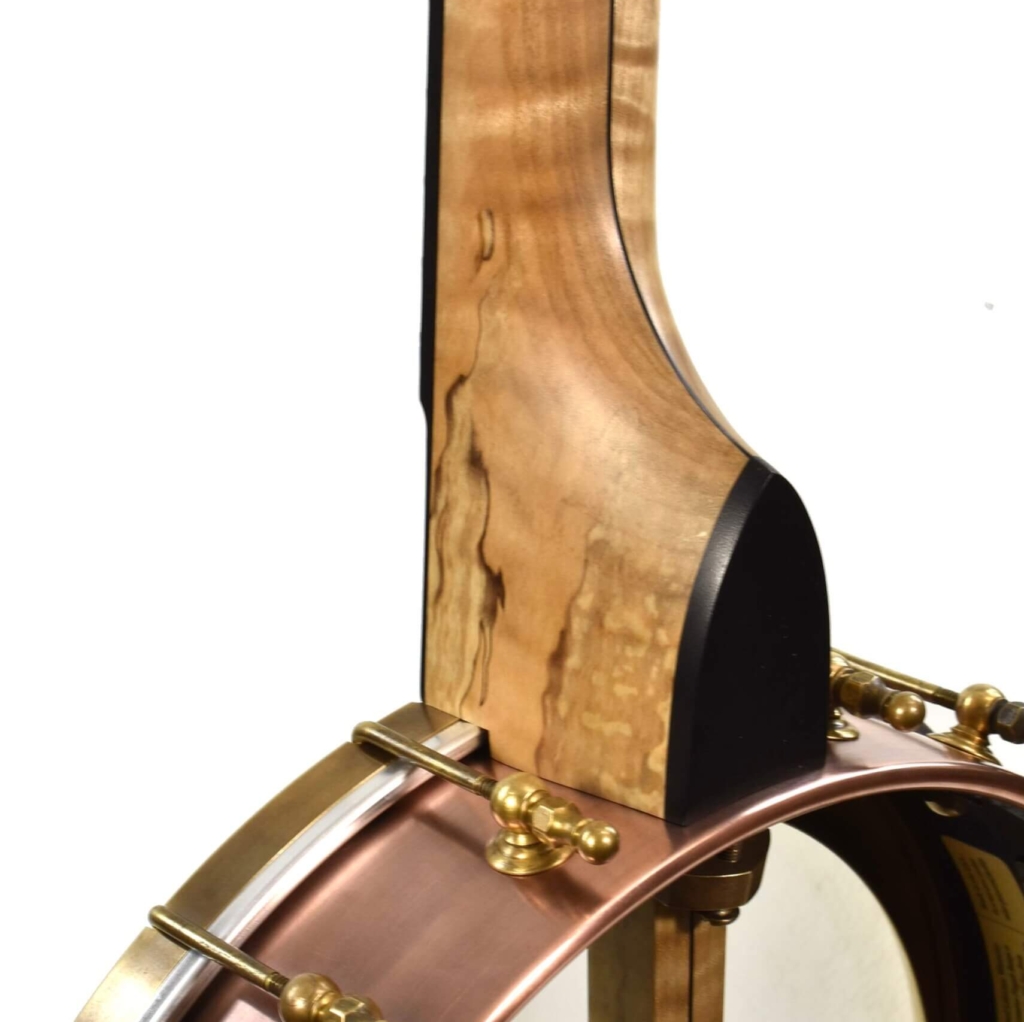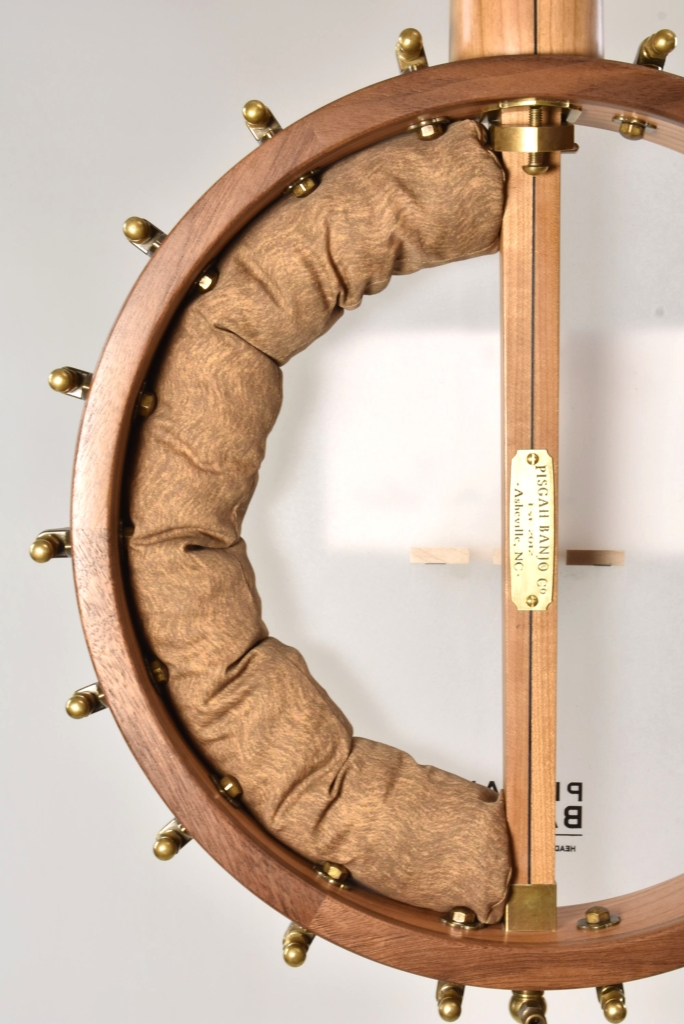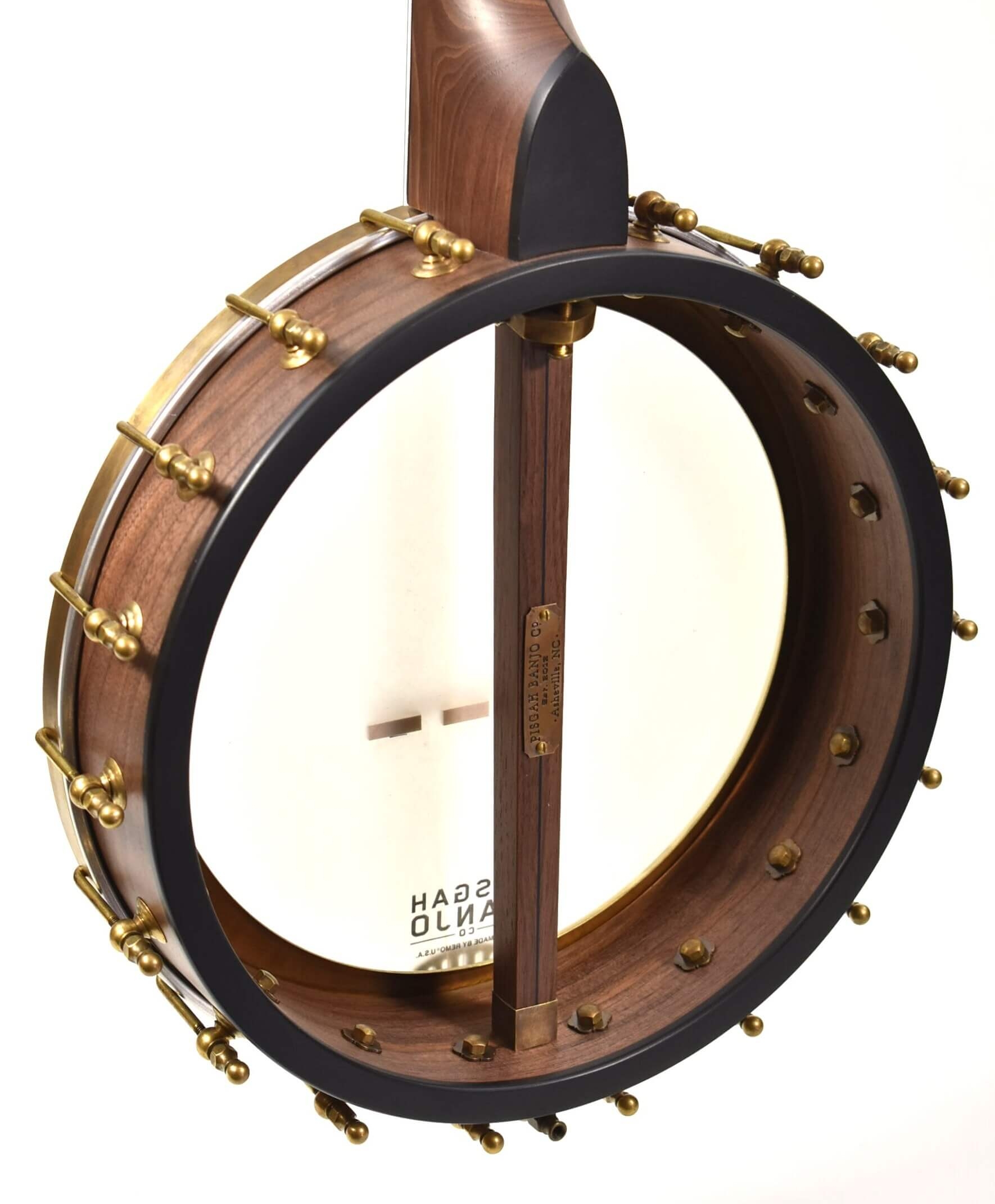
Written by: Patrick David Sawyer
As a banjo player, builder or enthusiast, you’ve likely come across the ongoing debate between dowel sticks and coordinator rods. A common misconception I’ve encountered over the years is the idea that banjos built with dowel sticks are unable to have the action adjusted. This simply isn’t true. Banjos with dowel stick construction can absolutely be adjusted, and their role in the banjo’s overall tone are more significant than some might realize. Additionally, understanding the differences between dowel sticks and coordinator rods in relation to the banjo’s design is key to understanding why dowel sticks are often the better choice, particularly for open-back banjos.
Dowel Sticks: Yes, They Are Adjustable!
Understanding Dowel Stick history in Banjo Setup
Dowel sticks are a traditional, time tested yet simple method for securing the neck to the rim of a banjo. This design originates from spiked lutes found in Africa and the Caribbean where the “spike” or continuation of the instruments neck passes though the body of the instrument. This method is still used today on gourd banjos. Here is a great example of modern day banjo builder Jeff Menzies reproduction gourd banjo where you can see the “spike” passing though the gourd and out the tailpiece side of the banjo.
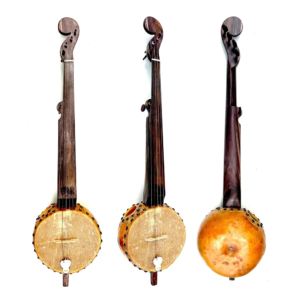
On Bracket style banjos, the dowel stick is glued into the neck’s heel and fastened to the rim with a Dowel Stick Brace, ensuring tension and pressure between the neck and the rim. The dowel stick brace acts as a fulcrum to achieve this pressure and should always be kept tight. The brace is not meant to be a means of adjustment and is only intended to securely hold the neck and rim together.

“Pinching the Pot”
By slightly shortening the end or tailpiece side of the dowel stick, a skilled luthier is able to adjust the back angle of the neck. This technique compresses the “open end” side of the banjo slightly together which in turn creates more back angle on the neck which can help achieve a lower action while maintaining a preferred bridge height. This method acts in the same way as a coordinator rod however only adjustable in one direction. We call this method “pinching the pot” and use this technique occasionally to accommodate a very specific preferred custom setup.
Adjusting the square hole in the rim:
This process involves adjusting the position of the neck and dowel stick in relation to the square hole in the rim. Raising the neck towards the tone ring or strings will lower the action over the fretboard making fretting easier. This also raises the string height above the head making it easier for clawhammer playing. Conversely, lowering the neck and dowel stick towards the rim cap will raise the string action in relation to the fretboard and is preferred by some players however this lowers the strings closer to the head making clawhammer or frailing a little more difficult. This method requires either filling or shimming the square hole in the rim which will be completely hidden
Any adjustments to the dowel stick or square hole should be performed by a professional or the original manufacture to avoid any warranty issues. In addition, there are many other methods for adjusting a banjo’s action before making changes to the dowel stick or square hole. These includes changing head tension, bridge height, and ensuring proper neck relief with the truss rod.
The elegance of the dowel stick system lies in its simplicity and its ability to preserve the natural transfer of vibrations between the neck and the rim. This unbroken wooden connection contributes to a rich, resonant tone, enhancing the overall sound of the banjo and is worth the little extra time needed to dial in a perfect setup.
Coordinator Rods: A Solution for Thicker Bluegrass Rims but with inherent design flaws
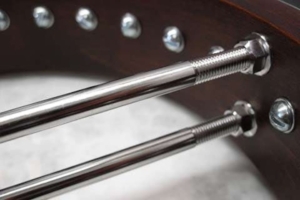
Coordinator rods were developed with bluegrass banjos in mind—banjos that typically feature much thicker rims and require a stronger, more adjustable system to manipulate the neck’s angle. Bluegrass rims are often heavy and thick, meaning they need a more robust mechanism, like coordinator rods, to adjust the action. The two metal rods, which run through the rim and are adjustable, allowing for precise neck alignment and action adjustments. This works by the rods acting as a turnbuckle “warping” the rim to achieve a preferred action and setup. This warping can lead to more stress on the instrument over time casing issues down the road.
This system isn’t necessary for open-back banjos, which typically have thinner, lighter rims. Coordinator rods are overkill for open-back rims, as these rims don’t require the same force to adjust the action. Open-back banjos are designed to be simpler and more resonant, and a dowel stick is more than enough to secure the neck in place while maintaining tonal purity.
In addition, Coordinator rods are attached to and rely on hanger bolts screwed into the heel or “end grain” of the neck. Any woodworker or engineer will tell you that hanger bolts or lag screws are not designed to be embedded into end grain of wood which can eventually create a week point in this style of construction. Hanger bolts in end grain can slip or pull out eventually causing issues with tone and durability and should not be relied upon for a major attachment method. Conversely, dowel stick joints are glued into the heel of the neck relying on the Face Grain of both the dowel stick and heel as the major gluing surface requiring no metal fasteners or screws to attach to the heel to the dowel stick making a much stronger bond that will stand the test of time. Glueing a wooden dowel into end grain is a very common woodworking technique where you need a strong joint and has worked well for centuries in uses ranging from timber framing to chairmaking and banjo construction, its a time tested joint that will last the life of the banjo and beyond.
Dowel Sticks: Comparable to Dovetail Joints in Guitars for Superior Sound Transfer
To better understand why dowel sticks are superior for sound transfer, it helps to compare them to neck joints in guitars. Guitar makers have long relied on dovetail joints for connecting the neck to the body, as they are considered one of the best designs for transferring vibrations. A dovetail joint creates a solid, stable connection that allows sound to flow smoothly from the neck into the body, producing a fuller, richer tone.
This is similar to how a dowel stick functions in a banjo. The dowel stick isn’t just a mechanical support; it’s a vital component for transferring the vibrations from the neck to the pot that coordinator rods and bolt on necks simply cant mimic. This creates a more organic, resonant sound—much like the effect of a dovetail joint in a guitar. It’s a simple, elegant design that has stood the test of time because it enhances the instrument’s natural tonal qualities.
Coordinator Rods and Bolt-On Necks: A Comparison to Guitar Design
On the other hand, coordinator rods are more akin to a bolt-on neck found in electric and some acoustic guitars. Bolt-on necks are functional, but they don’t provide the same level of resonance and natural sound transfer as a dovetail joint that is preferred in acoustic sound and energy transfer. The bolt-on design allows for easy removal and adjustment, which is useful for repair and setup, but it often results in a slightly less connected and less resonant tone compared to a dovetail joint.
Similarly, coordinator rods, while functional for adjusting the neck on a bluegrass banjo, don’t contribute to the same level of resonance and tonal warmth that a dowel stick provides. The metal rods are designed for convenience and adjustability, but they introduce complexity and weight that can interfere with the natural sound of the banjo, especially in an open-back design.
The Bottom Line: Why Dowel Sticks Are Best for Open-Back Banjos
In the end, whether you prefer dowel sticks or coordinator rods depends largely on the type of banjo you’re playing. For bluegrass banjos with thick, heavy rims, coordinator rods are a good choice—they offer the necessary adjustability to fine-tune the action and neck alignment.
But for open-back banjos, which have thinner, more responsive rims, dowel sticks are the superior choice. They provide an elegant and effective solution for securing the neck and adjusting the action while also enhancing the instrument’s tonal qualities. The dowel stick creates a more direct, natural connection between the neck and pot, resulting in a warmer, more resonant sound.
Just as a dovetail joint in a guitar ensures optimal sound transfer, a dowel stick does the same for a banjo. And just as a bolt-on neck offers convenience at the expense of some tonal richness, coordinator rods provide adjustability but may compromise the banjo’s natural resonance. For a purer, more traditional sound in an open-back banjo, the dowel stick is the way to go. Don’t let the myths fool you—dowel sticks are adjustable, simple, and, most importantly, they enhance the very soul of the instrument.
For more insights into Pisgah Banjo’s traditional dowel stick construction, check out Pisgah Banjos!
Disclaimer:
Please note that the information expressed in this post is based on personal opinions from the author, informed by years of hard work and experience. While the insights shared are rooted in real-world practice, they reflect individual perspectives and may not apply universally. Always consider multiple viewpoints and consult professionals in the industry when necessary.

